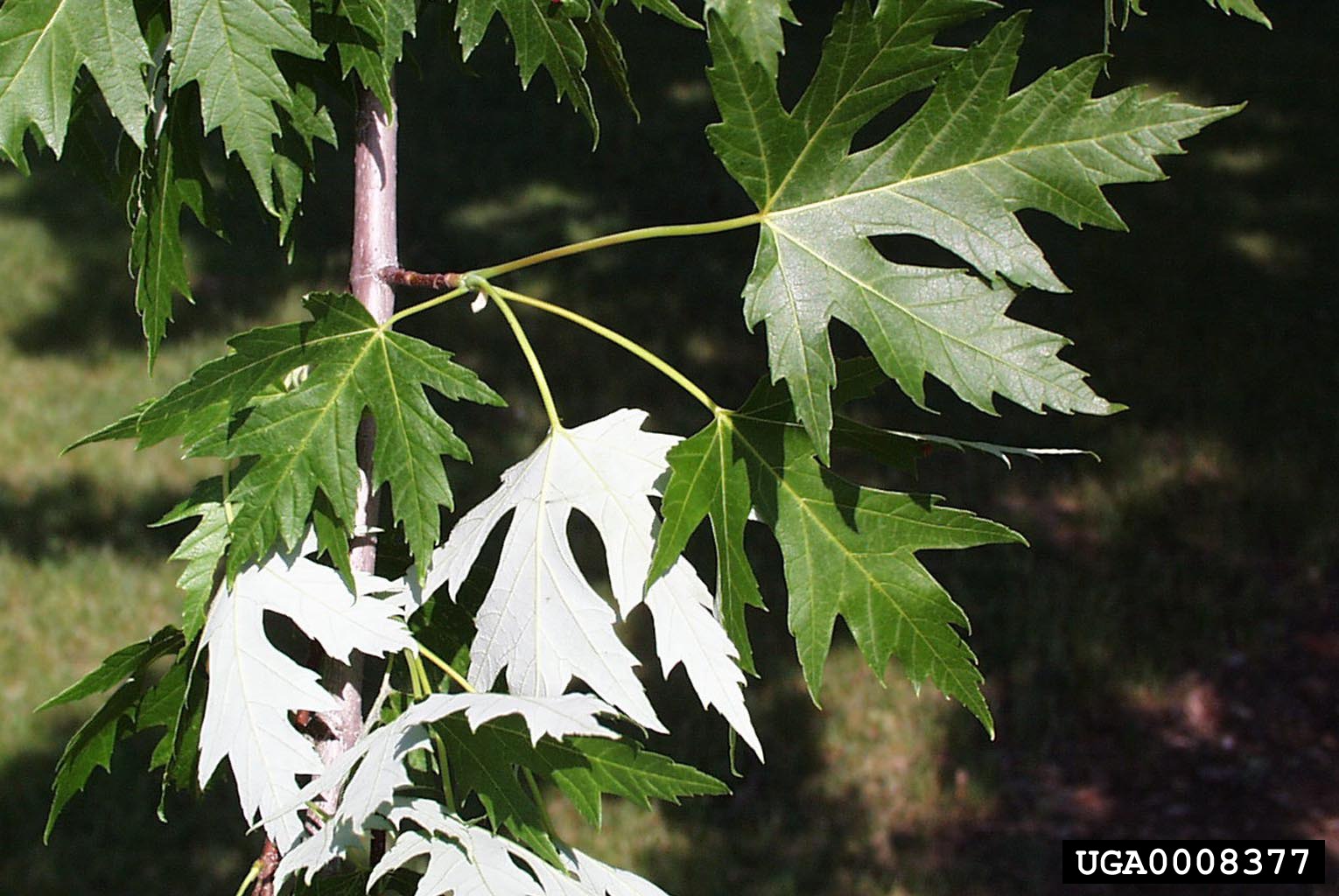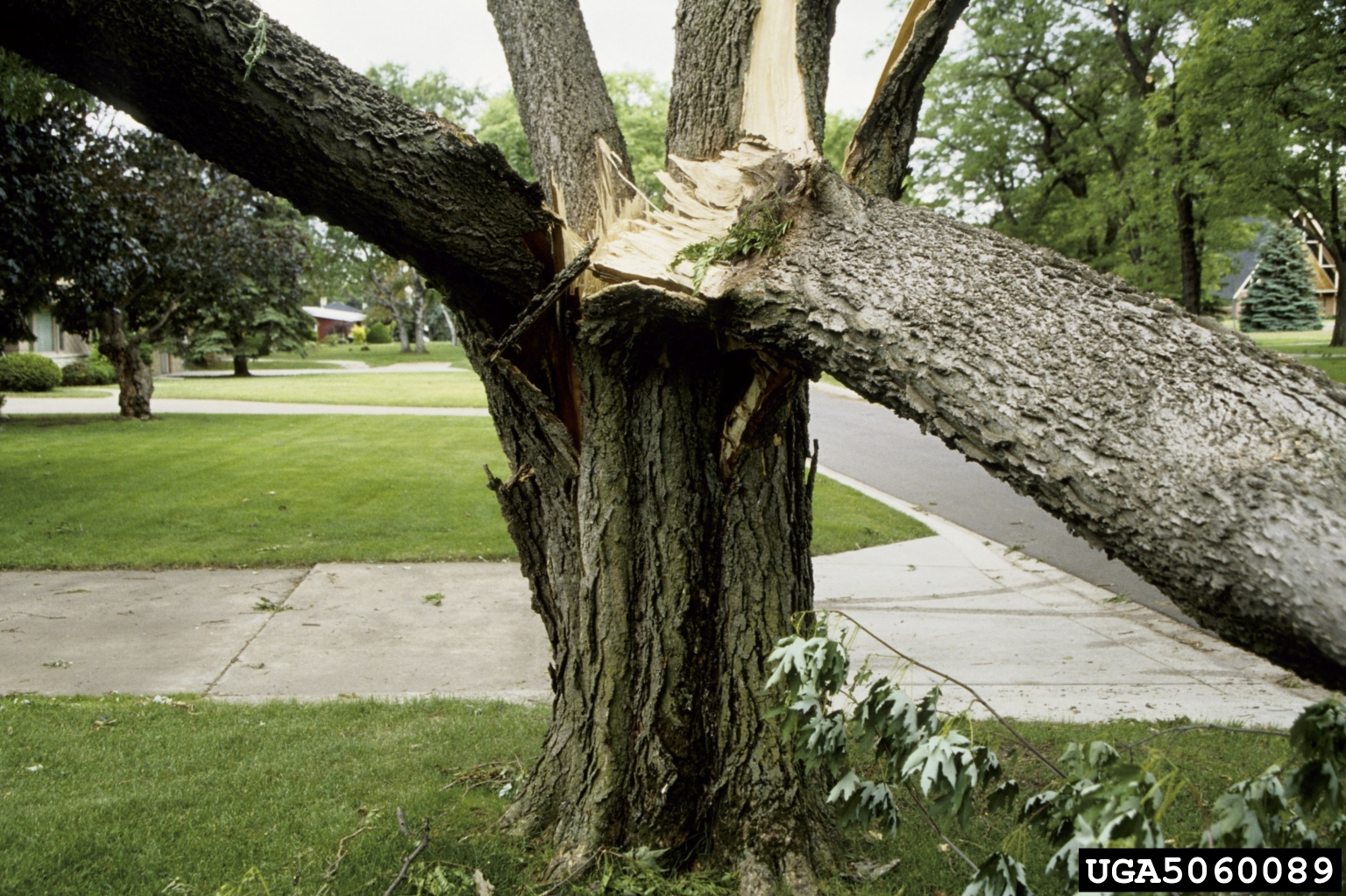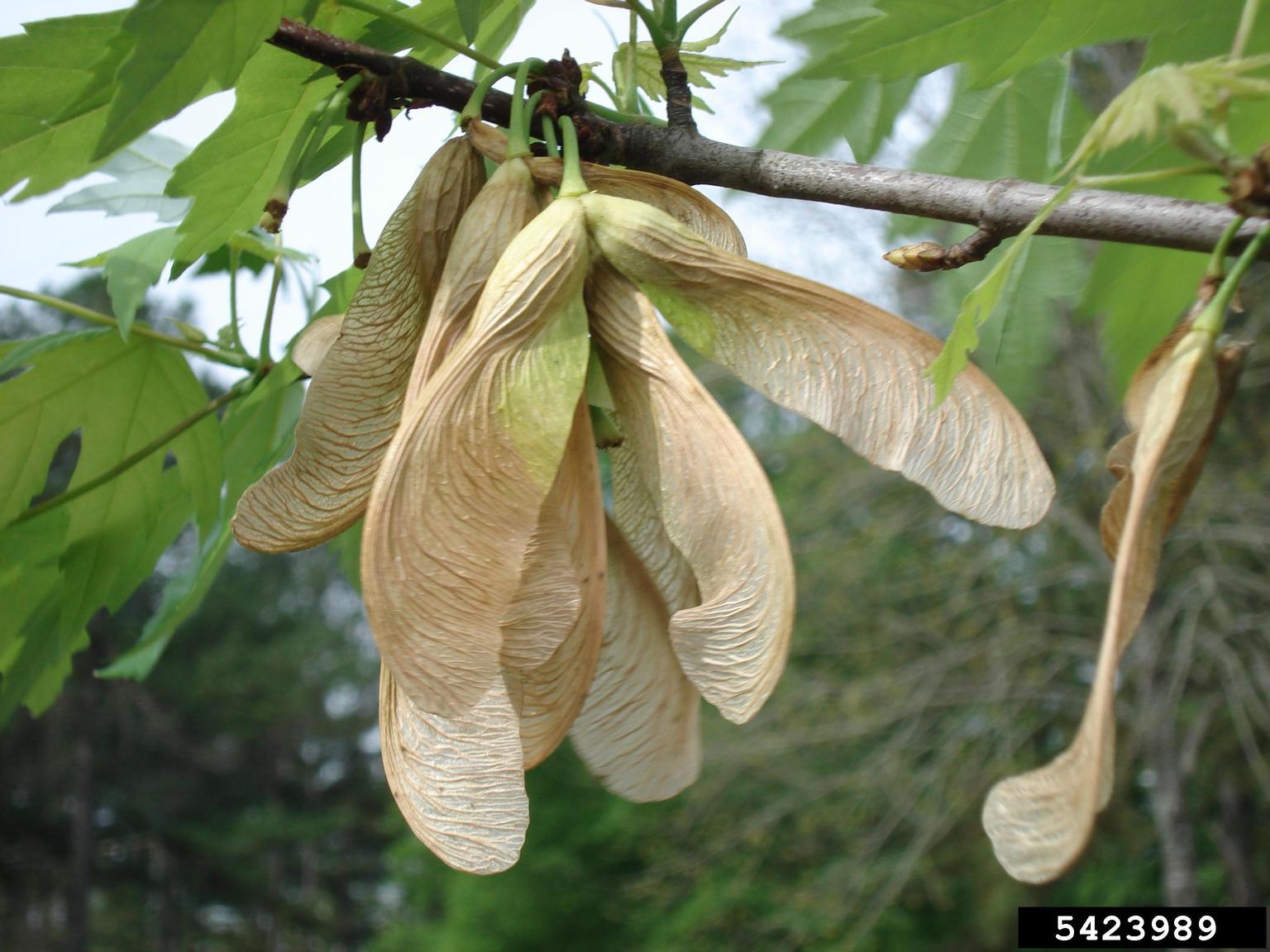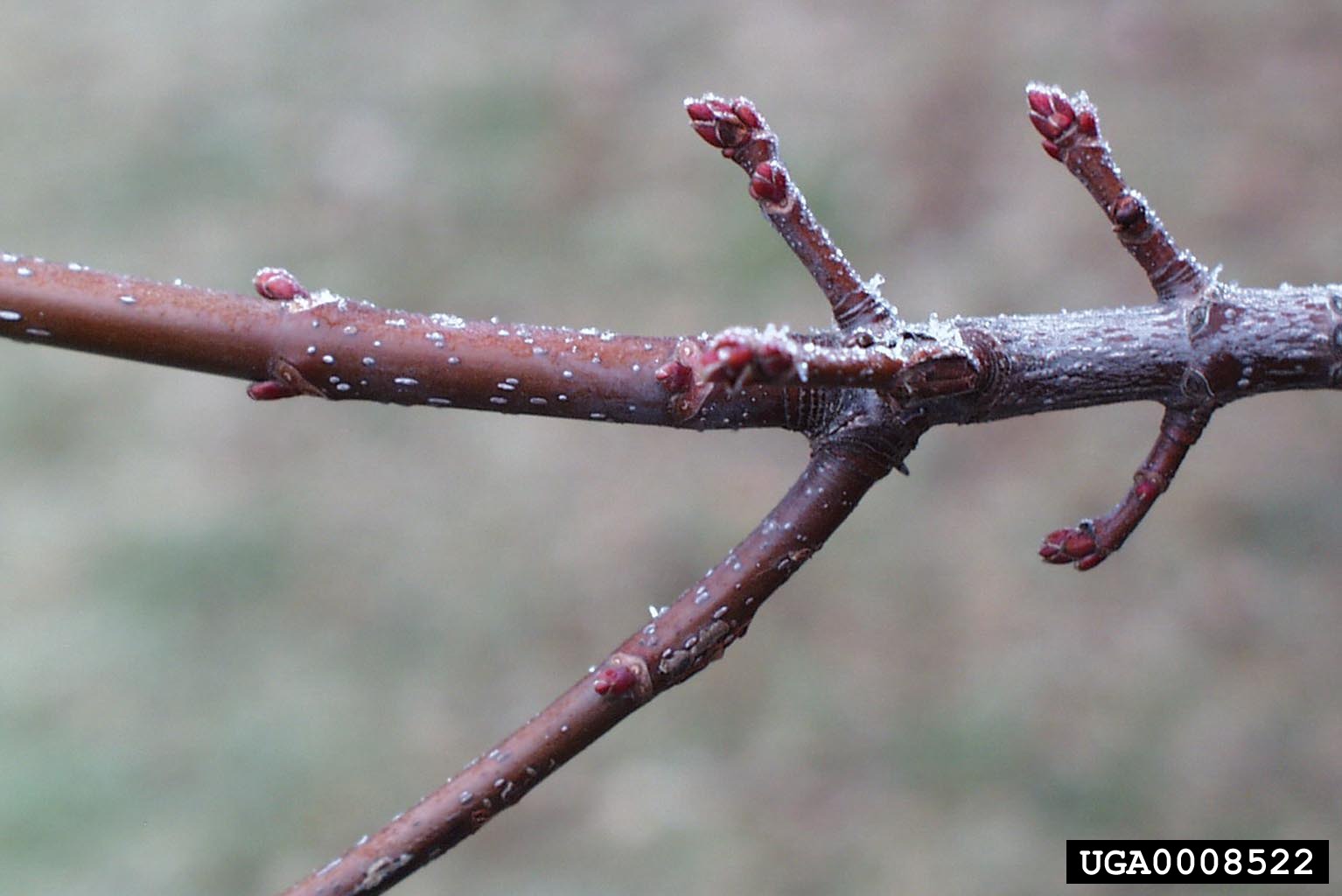Tree highlight: silver maple
Silver maple
Acer saccharinum (Family Sapindaceae)

Silver maple's common name comes from the silver underside of its leaves
The basics
Silver maple is a fast-growing, medium-to-large deciduous tree native to southeastern Canada and much of the eastern and midwestern United States. The common name ‘silver maple’ comes from the brilliant silvery underside of its leaves that flash when stirred by the wind. The leaves have five deeply cut, pointed lobes and are approximately 4 inches in length. Silver maple has extremely rapid growth and is highly adaptable, regardless of soil type. But because it thrives in floodplains, streambanks, and moist woodland habitats, it is also known as ‘water maple,’ ‘swamp maple,’ or ‘creek maple.’ Although somewhat short-lived and structurally weak compared to slower-growing hardwoods, silver maple is valued for its shade and is sometimes used as an ornamental. Silver maple produces a winged seed, called a samara, which twirls to the ground in a helicopter-like fashion. Silver maple samaras are up to 2 ½ inches in length and are the largest of the native maples.Did you know?
- Silver maple can grow 2 feet or more annually; it is among the fastest growing of the native maples.
- Its fast growth and extensive root system can help stabilize stream banks and reduce erosion — but can also threaten sidewalks and foundations when planted in urban environments.
- Silver maple wood is comparatively brittle and is prone to breakage in ice and wind storms.

It is not uncommon for silver maples to break during heavy winds or icy conditions.

Silver maple samaras are connected at a 90 degree angle.
Wildlife
- Silver maple provides valuable nesting cavities for animals such as woodpeckers, owls, and small mammals.
- In springtime samaras are a favorite seasonal feast for squirrels, chipmunks, and songbirds.
- Silver maple is host to a diverse community of caterpillars and other insects; these support birds and pollinators that rely on them for food.
Uses
- Commonly planted in parks and yards for fast shade, ornamental appeal, and soil tolerance.
- Silver maple wood can be used in furniture-making, pulpwood production, and occasionally for musical instruments like violins or guitars.
- Indigenous peoples utilized the wood for tools and crafts and boiled its sap for sweetener, though it is less sugary than sugar maple sap.

Maples are unusual in that they have oppositely arranged branches.
Benefits
Over a 20-year period, a healthy silver maple with a diameter of 20 inches will offset 8,738 car miles worth of CO2, absorb enough stormwater to fill 697 bathtubs, and remove an amount of pollution from the air – in gaseous and particulate form – equivalent in weight to 59 smartphones! Learn more at: https://mytree.itreetools.org/
Tree of the Week video
By University of Kentucky Forestry and Natural Resources Extension.
Click to watchContact us: ufi@uky.edu
Images sourced from forestyimages.org
